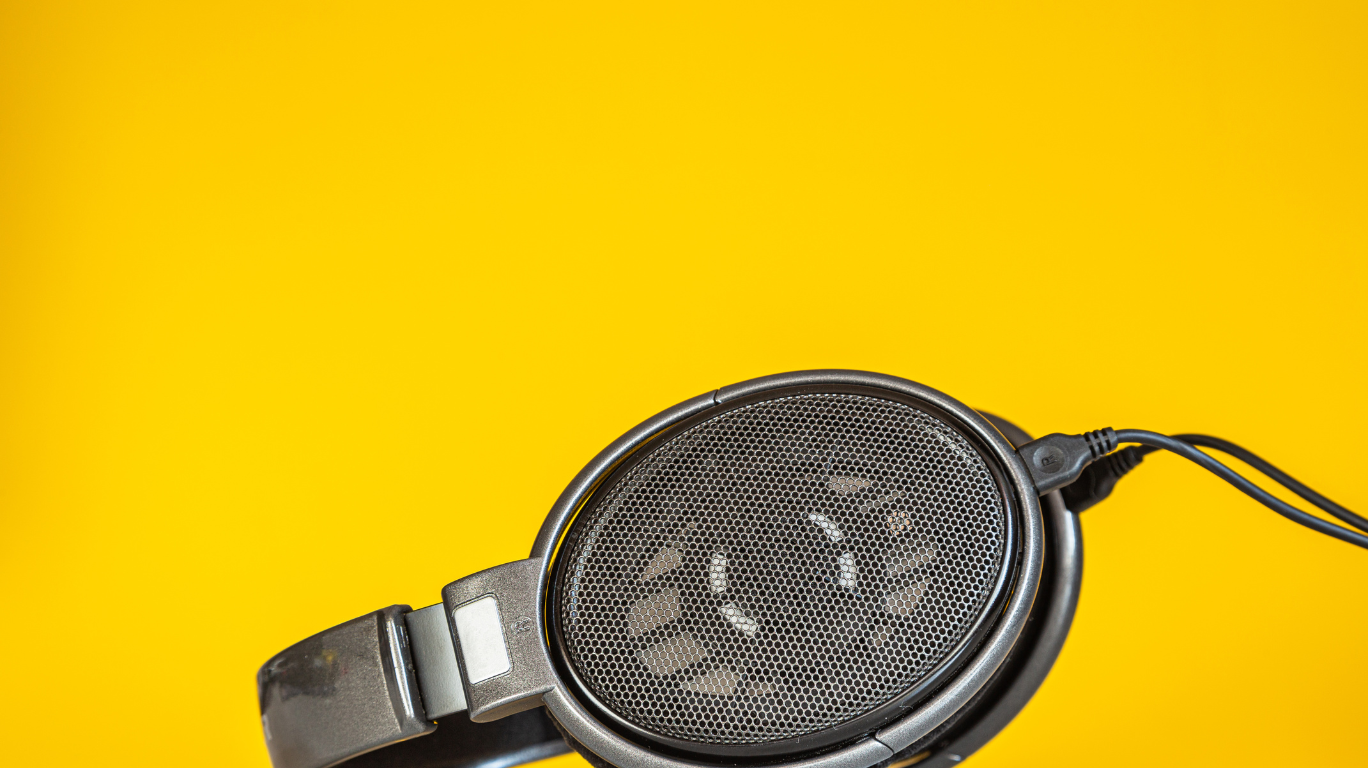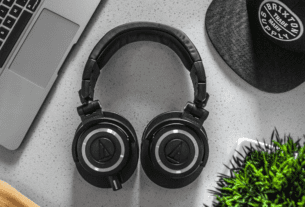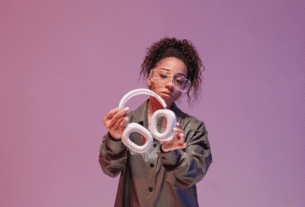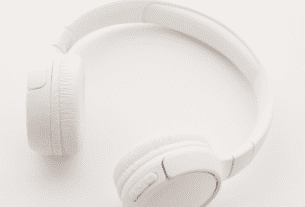Are you feeling overwhelmed by the variety of headphones available in the market? Do you want to make an informed decision before buying a pair? Look no further, this article breaks down the difference between Open-Back and Closed-Back headphones, helping you choose the perfect option for your listening needs.
What Are Open-Back Headphones?
Open-back headphones are a type of headphones that have partially open ear cups, allowing air and sound to flow through. This unique design results in a more natural and spacious sound, setting them apart from closed-back headphones. In addition, the open-back design provides a cooler and more breathable listening experience, making them perfect for extended listening sessions.
These headphones also offer a wider soundstage, creating a more immersive audio experience, and are often preferred by audiophiles for their precise and detailed sound reproduction. However, it’s important to keep in mind that open-back headphones do not provide isolation from external noise and may have sound leakage, making them less suitable for noisy environments or public use.
If you value high-quality audio and a natural soundstage, open-back headphones such as the Sennheiser Consumer Audio HD 560 S or AKG K702 are excellent options to consider.
How Do Open-Back Headphones Work?
- Wondering how open-back headphones work? These headphones have a unique design with perforated ear cups that allow air and sound to pass through.
- Unlike closed-back headphones, sound waves are not confined within the ear cups, resulting in a more natural and open sound.
- The open ear cups of these headphones allow sound to escape, preventing sound reflection and creating a spacious audio experience.
- Thanks to their open design, they provide a more immersive and expansive soundstage, making them ideal for critical listening and mixing.
- However, it’s important to note that open-back headphones lack noise isolation and sound leakage can disturb others in a quiet environment.
What Are the Pros and Cons of Open-Back Headphones?
When it comes to choosing the perfect headphones, there are a variety of factors to consider. One important aspect to take into account is whether to go for open-back or closed-back headphones. While both types offer their own unique advantages, they also come with their own set of drawbacks. In this section, we will discuss the pros and cons of open-back headphones, so you can make an informed decision on which type is right for you. From superior sound quality to potential noise leakage, we’ll cover all the important points to consider.
Pros:
Open-back headphones offer several advantages, making them a preferred choice for many audiophiles and professionals. Some of the pros include:
- Spacious soundstage: Open-back headphones provide a more open and natural sound, making them ideal for critical listening and professional audio work.
- Comfort: The open design allows for better airflow, reducing heat and pressure, resulting in increased comfort during long listening sessions.
- Sound quality: These headphones often deliver a more accurate and detailed sound reproduction due to the open design, enhancing the overall listening experience.
- Reduced ear fatigue: With less sound pressure build-up behind the drivers, open-back headphones can reduce ear fatigue over extended use.
- Natural sound: The open design minimizes resonances and reflections, resulting in a more natural sound representation.
When choosing headphones, consider these benefits alongside your specific audio needs and preferences. Have fun exploring the options and finding the perfect pair for your listening pleasure!
But hey, at least you can still hear your roommate eating chips in the next room.
Cons:
Cons of Open-back headphones:
-
- Sound leakage: These headphones allow sound to escape, which can be disruptive to those nearby.
- Reduced isolation: They do not block external noise well, making them less suitable for noisy environments.
- Weaker bass response: Due to their open design, they often have less impactful bass compared to closed-back headphones.
Did you know? Open-back headphones are favored by audiophiles for their natural and spacious sound reproduction.
Closed-back headphones: perfect for blocking out noise and pretending to listen to people.
What Are Closed-Back Headphones?
Closed-back headphones are a specific type of headphones that feature fully enclosed ear cups. This design is intended to prevent sound from escaping and reduce the amount of ambient noise that may interfere with the audio. What sets closed-back headphones apart is their ability to provide superior isolation, making them ideal for use in environments where sound leakage is undesirable. Additionally, the sealed design of closed-back headphones often results in a stronger bass response. They are commonly used in recording studios for monitoring, as well as in situations where privacy is crucial, such as listening to music in public places.
Brands like Sony, Audio-Technica, and Sennheiser offer a variety of closed-back headphone models to cater to different preferences and needs. We recommend the Sony WH-1000XM4 Headphones.
How Do Closed-Back Headphones Work?
- Closed-back headphones function by having fully sealed ear cups, preventing sound from escaping and outside noise from entering.
- The headphone’s driver produces sound waves that are confined within the ear cups, resulting in improved noise isolation.
- This design is ideal for private listening in noisy environments or when sound leakage is not desired.
- By effectively trapping the audio, closed-back headphones deliver a more intimate sound experience with a stronger bass response compared to open-back headphones.
- Closed-back headphones were initially developed in the early 20th century to provide a more immersive and private listening experience for individuals in bustling urban environments.
Just like a good friend, closed-back headphones offer strong isolation but can also suffocate you when you need some space.
What Are the Pros and Cons of Closed-Back Headphones?
When it comes to choosing the perfect pair of headphones, one of the biggest decisions to make is whether to go for open-back or closed-back headphones. While open-back headphones offer a more natural and spacious sound, closed-back headphones provide better noise isolation. In this section, we will discuss the pros and cons of closed-back headphones, so you can determine if they are the right choice for your listening needs. From enhanced bass to potential discomfort, we’ll cover all the important aspects to consider before making your decision.
Pros:
- Open-back headphones allow air and sound to pass through the ear cups, providing a more natural and spacious sound. This design reduces resonances and enhances sound quality.
- They offer a wider soundstage, making the audio feel more expansive and immersive, ideal for critical listening and professional audio work.
- The open design minimizes heat and pressure buildup, enhancing comfort during extended use.
- Closed-back headphones provide excellent noise isolation, blocking out external noise and preventing sound leakage.
- They are well-suited for private listening and use in noisy environments, such as commuting or office settings.
- Closed-back headphones have the added benefit of being more portable and suitable for on-the-go use due to their compact and sealed design.
Cons:
- Sound leakage: Open-back headphones allow sound to escape, which may disturb others nearby and limit usage in shared or quiet spaces.
- Reduced isolation: Ambient noise easily enters open-back headphones, making them unsuitable for noisy environments or situations requiring focus.
- Sound quality limitations: While open-back headphones offer natural sound, they may lack strong bass response and fail to reproduce low frequencies accurately.
Pro-tip: Be aware of the cons of open-back headphones and consider using them in a controlled environment, such as a quiet home setting, to fully appreciate their sound quality without disturbing others.
Which Type of Headphones is Best for You?
- Sound Isolation: Closed-back headphones are the ideal choice for noisy environments, such as commuting or office work, while open-back headphones are better suited for quiet spaces like home listening.
- Soundstage: Open-back headphones offer a more natural and spacious sound due to their open design, making them perfect for critical listening and professional audio work. On the other hand, closed-back headphones provide a more intimate sound experience, making them suitable for personal listening.
- Portability: Closed-back headphones are more portable and travel-friendly, making them the better option for on-the-go use. In contrast, open-back headphones are bulkier and less convenient for outdoor activities.
- Comfort: Both types of headphones can be comfortable, but closed-back headphones are generally better at preventing ear fatigue during extended use. Open-back headphones, on the other hand, allow for better airflow, making them more suitable for long listening sessions.
What is Your Primary Use for Headphones?
When deciding on the type of headphones to purchase, it is crucial to determine your primary use for them. If you need headphones for professional audio work, such as mixing and mastering music, open-back headphones may provide a more accurate sound representation. However, if you are looking for headphones for commuting, closed-back headphones are more effective at blocking out external noise. For gaming or listening at home, open-back headphones can offer a wider soundstage, creating a more immersive experience. Knowing your primary usage will assist you in making an informed decision based on your specific needs and preferences.
Let’s be real, if your budget is sky’s the limit, you’re probably not even reading this article.
What is Your Budget?
When considering purchasing headphones, it’s crucial to assess your budget. Think about how much you are willing to invest in a pair of headphones and what features are essential to you within that budget. If you have a limited budget, prioritize basic functionalities like sound quality and comfort. However, if you have a more flexible budget, you can explore high-end models with advanced features such as noise cancellation and premium materials. Remember to strike a balance between your budget and the quality and features you desire. It’s also worth considering the longevity of the headphones when factoring in your budget.
If you’re a fan of blasting your music without disturbing others, closed-back headphones are your perfect isolationist partner. But if you want to immerse yourself in a concert-like experience, open-back headphones have got you covered with their spacious soundstage.
Do You Prefer Isolation or Soundstage?
When deciding between open-back and closed-back headphones, it is important to consider whether you prefer isolation or soundstage.
Closed-back headphones are ideal for noisy environments or when you want to avoid sound leakage, as they provide better isolation. On the other hand, open-back headphones offer a wider soundstage, creating a more natural and spacious audio experience.
If you enjoy a more immersive and natural sound with a broad sense of space, open-back headphones are the way to go. However, if noise isolation is your top priority and you prefer to keep your music to yourself, then closed-back headphones would be the better choice.
Pro-tip: If you are unsure, it is always helpful to test both types of headphones to experience the difference in isolation and soundstage for yourself before making a decision.
Frequently Asked Questions
What is the main difference between open-back and closed-back headphones?
The main difference between open-back and closed-back headphones is the design of the ear cups. Open-back headphones have perforated ear cups, allowing sound to escape and creating a more natural, spacious sound. Closed-back headphones have solid ear cups, providing a more isolated sound experience.
Which type of headphones is better for sound quality?
This ultimately depends on personal preference, as both types of headphones can provide high-quality sound. Open-back headphones are known for a more natural and open sound, while closed-back headphones offer a more isolated and focused sound.
Are open-back headphones suitable for use in public?
No, open-back headphones are not recommended for use in public due to their design which allows sound to escape. This can be disruptive to those around you and also affect the sound experience for the listener.
Do closed-back headphones provide better noise isolation?
Yes, closed-back headphones are designed to provide better noise isolation due to their solid ear cups. This makes them a good choice for use in loud environments or for those looking for a more focused sound experience.
Can I use open-back headphones for recording or monitoring?
Yes, open-back headphones are commonly used in recording and monitoring situations due to their natural and spacious sound. They allow for better sound accuracy and are also more comfortable to wear for longer periods of time.
Are there any recommendations for which type of headphones to use for specific purposes?
Open-back headphones are typically recommended for audiophiles and for use in studio recording and mixing, while closed-back headphones are better for everyday use and for noise isolation. However, it ultimately depends on personal preference and the specific needs of the listener.



